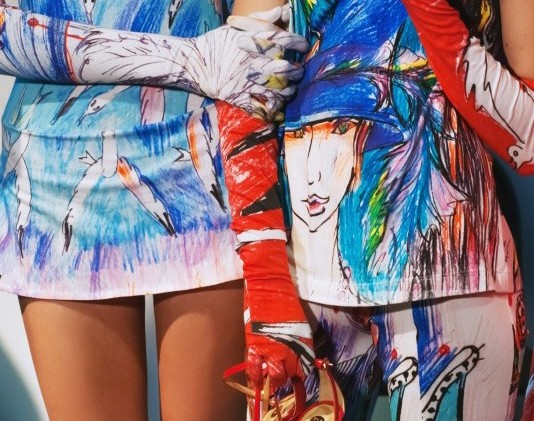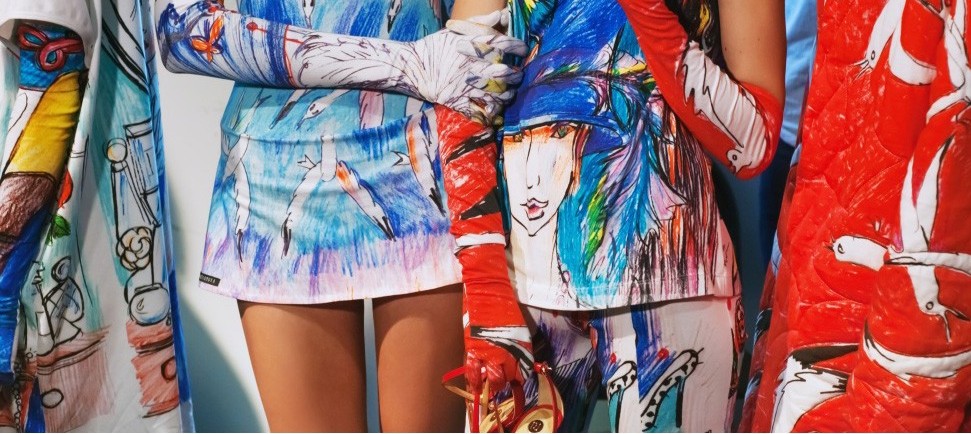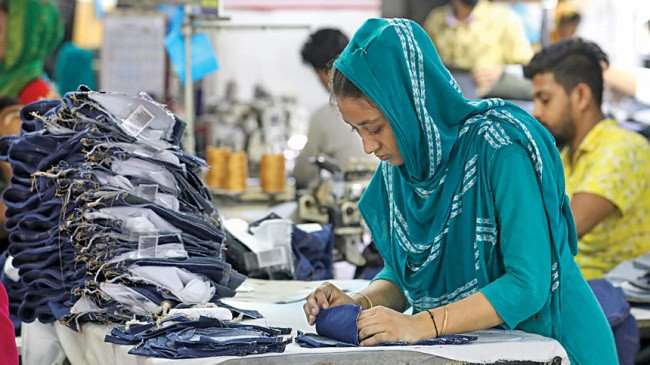FW
With banks insisting on credit ratings for extension of loans at lower interests, spinning mills in Tirupur and its hinterland have adopted a consultative approach for effective representation of company-related data to credit agencies for procuring the best possible rating. To help mills present the company’s financials and strengths in a scientific manner for optimising credit ratings, the Texpreneurs Forum, comprising different textile sector stakeholders, has engaged a group of experts for consultations.
The aim of engaging the experts and having an interaction with them is to make units understand what parameters credit rating agencies look for when computing the ratings for respective companies. Unless a company knows such details, it might miss giving key data which otherwise could boost the credit rating to higher levels than the eventual figures assigned to them.
Optimisation of credit ratings would bring immense benefits to spinning mills which are highly capital intensive in operations. A higher rating would improve the bargaining power of the units to get loans at much lower interest rates and also will come in handy when asking for enhancement of credit limits. Units in Tirupur need to concentrate on reducing the working capital intensity so that their fund requirements come down. They also need to infuse fresh equity from their own resources, opt for term loans of longer maturity profile and modernise the existing machinery, all of which will help increase the credit rating.
Bangladesh wants to have duty free access to Thailand's jute products. Bangladesh is giving priority to the promotion of environment- friendly jute and jute products. Thousands of workers are employed in Bangladesh’s jute mills. The country is urging Thailand to use jute sacks instead of poly bags for storage of rice and other crops. Bangladesh also wants Thai investors to buy off the public sector jute and textile industry in Bangladesh and invest in modernising the jute mills for the production of 100 per cent export-oriented consumer- friendly modern jute products of international standards.
Jute, a vegetable fiber can be spun into sackcloth, used to be the golden fiber of Bangladesh. It brought much-needed foreign income to the impoverished nation. But it lost its luster in the 1980s after synthetic materials like polythene and plastics were introduced.
Now the natural fiber has made a spectacular comeback. With growing environmental awareness, jute, which is bio-degradable, has become the preferred alternative to polluting synthetic bags. Jute is considered the second most important natural fiber after cotton in terms of cultivation and use. It is mainly grown in eastern India, Bangladesh, China and Burma.
Until recently the fiber was used mostly as a packaging material. With a diversification of jute products, the demand for jute has increased.
Pakistan cotton mills have expressed great concern over the intention of the government to impose sales tax on raw cotton in the federal budget 2015-16.
They say such a tax will discourage production and inhibit the smooth flow of exports and run counter to the laid down government policy of encouraging cotton trade in the country. Any hindrance in the smooth export of cotton would prevent growers from getting a fair price for their produce.
Another point mill owners make is that nearly 80 to 85 per cent of the cotton crop is exported in the form of raw cotton, cotton yarn, cotton fabrics, garments and cotton made-ups. The sales tax, if levied on raw cotton, would be refundable at the export stage. Taking into consideration the substantial expenses involved in tax collection, administration and in the refund process, the balance available amount to the government would be comparatively insignificant.
In addition, since exporters of raw cotton usually operate on narrow margins, they cannot afford to keep substantial borrowed amounts stuck-up for six or seven months. Due to a delay in refund of sales tax, serious liquidity problems would be created for cotton exporters. Exports of cotton would adversely suffer and compromise the interests of cotton growers and ginners.
Marks & Spencer (M&S) published its ‘2015 Plan A Report', the first since it launched the third stage of its Plan A sustainability strategy - Plan A 2020. The report has outlined a number of achievements made by the company over the last 12 months, including around 652,000 workers in M&S's clothing supply chain having received training on subjects such as financial literacy and health information and services.
M&S said that it has been working with its suppliers to help them become more efficient, reduce their environmental footprints, and provide better working conditions for their employees. As a result, 102 of its largest clothing factories have adopted energy efficiency measures, making estimated savings of 10 per cent. Now it aims to consult with customers and stakeholders on what they consider to be important about how and where M&S sources and produces its products. The retailer is hoping to respond by improving the information available by 2020.
M&S said it last year collated results from a small-scale online survey of sustainability specialists, a review of best practice by Forum for the Future, and a summary of findings from existing customers and public market research. This year, it has commissioned further research with GlobeScan, gathering the views of 172 sustainability specialists globally. In a further move to increase transparency in its supply chain, M&S plans to publish a list of its clothing suppliers - a goal the retailer said it has not yet started, but is aiming to publish by 2016.
M&S also outlined a number of new sustainable innovations, including its Footglove Earth shoes made from recycled and sustainably sourced materials. It has also started using mixed recycled fibres collected through its Shwopping clothes recycling scheme to make Topaz filling for use in mattresses. The company has also started a two-year project – Redress - with the University of Cambridge, Institute for Manufacturing, to investigate opportunities to increase the volume and value of garment recovery.
More than 25 brands and retailers, including H&M, Inditex, Levi Strauss & Co and Marks & Spencer, have pledged to phase out endangered forest fiber in their product lines. Denim brand G-Star Raw will eliminate the use of rayon and viscose fabrics derived from ancient and endangered forests. The brand will give preference to recycled and FSC-certified wood products. The brand is working with environmental organisation Canopy, which last year produced research suggesting threatened forests are routinely making their way into rayon, viscose, modal and other trademarked fabrics.
Aditya Birla, the world’s largest producer of viscose, will stop sourcing raw material from ancient and endangered forests. The Indian conglomerate said it applies to wood and pulp sourcing for all its mills, including those in Canada, Indonesia and China.
Canopy's Fashion Loved by Fashion campaign seeks to shift suppliers away from endangered forest sourcing as well as advancing long-term conservation solutions and more sustainable fabric solutions, such as recycled fabrics or non-wood fibers like straw.
This, in addition to Lenzing’s augmented sourcing policy, translates to 40 per cent of the global supply of viscose fibers being on track to avoid being sourced from endangered forests, forward conservation solutions and explore alternative inputs like recycled clothing.
The Rainforest Action Network (RAN) has protested against 15 apparel brands including Ralph Lauren, Prada, LVMH, Michael Kors, Tory Burch, Vince, Guess, Velvet, L Brands, Forever 21, Under Armour, Footlocker, Abercrombie and Fitch, GAIAM and Beyond Yoga accusing them of irresponsible fibre sourcing.
RAN protesting during the Council of Fashion Designers of America (CFDA) Fashion Awards at Lincoln Center in New York said that these brands are manufacturing merchandise at the cost of forest destruction, human rights abuses and climate pollution.
The organisation demanded that these companies must take responsibility for their supply chains, identify and eliminate bad actors, and develop strong, time bound commitments to protect forests and human rights. RAN accused that the global expansion of mega-plantations for the production of pulp for fabrics is making negative impact on the indigenous and forest-dependent communities. Illegal land grabbing according to RAN has become another major concern.
Bangladesh has decided to take stern action against garment factories that fail to conduct structural, fire and electrical assessment. Punitive action includes stopping factory production. Some 11 garment factories, which were unwilling to be assessed in the past, say they are now interested in receiving the free inspection service. Roughly 1,500 factories, which remain outside the purview of Accord and Alliance, are expected to be assessed by a government-ILO joint program and ILO is paying the cost of inspection.
The joint assessment program began in November 2013. Some 800 garment factories have so far been assessed under the initiative, while Accord and Alliance inspected their listed factories within the set timeframe. The assessment program was reportedly delayed due to non-cooperation of factory management and inconsistencies in information including factory addresses and contact numbers the ILO received from apparel industry associations.
Earlier, the deadline for the free assessment of garment factories was set at April, 30, 2015. It has since been revised to July 31. After the expiry of the revised deadline, building and factory owners have to bear the cost of assessment. The assessment covers factories that are members of either the Bangladesh Garment Manufacturers and Exporters Association (BGMEA) or the Bangladesh Knitwear Manufacturers and Exporters Association (BKMEA).
Pakistan's textile mills want import duty on polyester staple fiber (PSF) to be abolished. They want imports of specialty fibers including acrylic to be allowed at zero per cent import duty enabling the industry to diversify its product base.
They also want imports of viscose staple fiber, which is not being manufactured locally, to be allowed at zero per cent customs duty. The country’s textile industry is predominately cotton based with an odd fiber mix, i.e. 80 per cent cotton and 20 per cent manmade fibers. The global trend is 70 per cent manmade fibers and 30 per cent cotton.
Mills say the proposal to increase customs duty on PSF imports would not only make export-led textile goods unviable but also make PSF-based textile goods for domestic consumption unaffordable. Already, they say, cheaper imports and smuggling of fabric and synthetic yarn have made inroads into the domestic market due to the present high polyester tariff.
Pakistan’s textile industry is unable to produce the exportable surplus, in particular manmade fiber-based textile products, to benefit from the enormous opportunities under GSP Plus of export of synthetic-based textile products.
The country’s textile industry finds itself unable to compete in man-made fiber textile and clothing products owing to the protection extended to local PSF.

The Russian clothing and footwear market has been suffering due to low demand and consumer sentiment since 2014. This has forced many European brands to exit the market. China on the other hand is losing its position as the world’s leading garments manufacturer and this has opened Russia’s doors for other Asian countries.

Studies suggest that from the beginning of 2015, the Russian clothing and footwear retail market declined by 25–35 per cent in volume terms. It is, however, expected to grow at about 3.5–4 per cent by the end of the year in terms of value to reach 3.21 trillion rubles ($60.9 billion), according to Y-Сonsulting analysts’ estimates. In the first quarter of 2015, sales volume declined by 42 per cent and 19 per cent in value. The mid-range segment has experienced the most severe drop. Since 2014, many international clothing brands made an exit from the Russian market, including Italy’s OVS, British New Look and River Island, and Germany and Hong Kong headquartered Esprit, with more on their way out.
Russia opens doors to China’s neighbours
With China’s position as world’s number one destination for cheap textiles on decline, its neighbouring Asian counties such as India, Bangladesh, Vietnam, Thailand, and Indonesia have gained importance and access to the market like Russia.
Vietnam Textile & Apparel Association (VITAS) statistics reveal between 2005 and 2011, the country’s garment exports increased by 32 per cent, while China's exports increased by 15 per cent and exports from India, Turkey, Malaysia and Thailand increased by about 7 per cent. There are two major factors that make garment imports to Russia from these counties more competitive than from China, - the prices and the lower import duties imposed by the Russian government.
Bangladesh and Vietnam are on the list of seven largest apparel exporters to Russia, according to on Consulting Group data. Although their shares are not as big as China’s, the growth is more impressive. In 2012-14, imports from Bangladesh grew at 25.59 percent and Vietnam at 16.96 per cent while imports from China fell by 4.48 percent.
Vietnam National Textile and Garment Group (Vinatex) says, the European Union will continue to be Vietnam’s major market in the coming years. However, with Moscow no longer levying high tariffs on Vietnamese apparel products, its exports to Russia will increase. Recently, Vietnam signed a free trade agreement with the Eurasian Economic Union (EAEU) comprising Russia, Belarus, Armenia, Kazakhstan and Kyrgyzstan. Russian authorities expect this agreement to become a model for Russia’s further integration with other members of ASEAN trade bloc.
Asian imports and domestic production
While imports from emerging Asian countries to Russia are on the rise, the Russian government supports expanding domestic manufacturing capacity and improving production efficiency. There are 653 large and medium enterprises and about 4,000 small companies in Russia engaged in the garments and textile industry, according to government statistics. The industry is witnessing shoots of revivals since the crisis of 2009.
According to Souzlegprom (Russian Union of Entrepreneurs of Textile and Light Industry), domestic manufacturers benefit from Russia's Light Industry Development Strategy, which provides state support for textile and garments manufacturers, including modernization of technological base and enhancing their competitiveness, among other measures. Last year, the Russian government banned using imported textiles for manufacturing of military uniforms, leisurewear, underwear, bedclothes, hats, socks, pillows and shoes to boost domestic production.
Inspections on hundreds of small and medium-sized garment and textile factories in Vietnam will be carried out soon. The aim is to improve safety and working conditions in the sector. Another goal is to improve the knowledge and skills of labor inspectors.
Over the next five months, around 160 firms will be inspected across 12 provinces. The campaign will take place across a readymade garment sector that employs around 2.5 million workers. The companies that will be inspected will mainly be small and medium-sized enterprises, outsourcing companies, those that have no direct relationship with exporters.
Inspectors will be trained on how to plan, implement and evaluate the campaigns so that similar initiatives can be carried out in future. A risk mapping exercise was carried out in 2014. Around 25 companies in the readymade garment sector were visited by inspectors trained in standard procedures. The finding then was that there were significant risks of non-compliance in the sector and identified the main causes as poor understanding of the law and a failure to grasp the benefits of compliance.
Vietnam is a strong garment sourcing destination. Gamrents making industry is one of the most important in Vietnam, accounting for 13.6 per cent of the country's export turnover and 10.5 per cent of the country's GDP.












